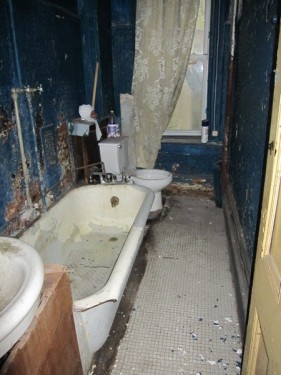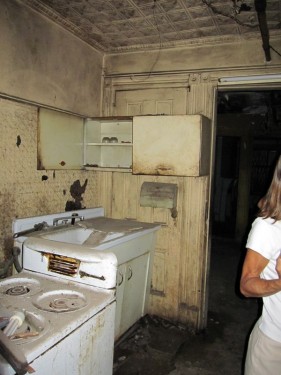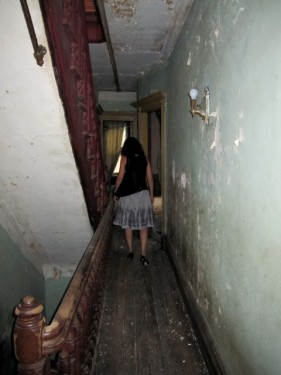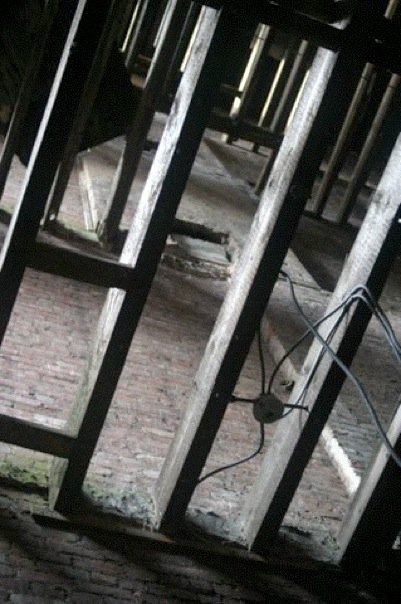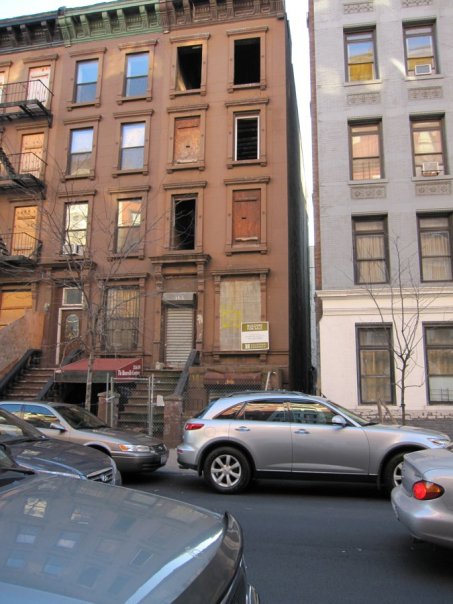If you own a townhouse in Harlem you’ll be happy to hear that the market has hit bottom and is now starting to go back up. A few months ago I pulled a list of Harlem townhouses that had sold over $1M and the list was pretty short (only 5), the highest price was just under $1.7M and the price per square foot was pretty miserable. PRIME locations like Strivers’ Row were getting in the mid-$300s/sq. ft. and ones that needed significant TLC on decent blocks (like Hamilton Terrace) were selling for just under $300/sq. ft.
Well, if you bought at those prices I think you bought at the bottom of the market. Things are much better now. The number of sales over $1M has doubled to 10 for the past 6 months and at least one of the properties is back over $500/sq. ft.
And here they are…
- 262 W 139 St (Strivers’ Row) – $1.85M, 3,660 sq. ft., $505/sq. ft., two family with an owner’s triplex over a ground floor rental – This place is ABSOLUTELY IMMACULATE. It was an over the top renovation planned back when you couldn’t help but make money flipping townhouses in Harlem. Things didn’t go very well for the developer/seller, but the new owner has a stunning place to live (with a garage!)
- 14 W 120 St (Mt. Morris) – $1.385M, $3,37 sq. ft., $456/sq. ft. – 18′ 4 story brick townhouse literally across the street from Marcus Garvey Park. SRO restricted. HPD says it has one class A apartment and 9 class B rooms. For some reason DOB has it classified as 4 family, but is aware it’s SRO restricted.
- 116 W 120 St – $1.485M, 3,636 sq. ft., $408/sq. ft. – 20′ 4 story painted limestone townhouse. Surprisingly this is an SRO restricted old law tenement. HPD says there is one class A apartment and 6 class be “rooms”. DOB still classifies it as an old law tenement, but doesn’t realize it’s SRO restricted.
- 7 W 119 St (just outside the Mt. Morris Historic District) – $1.098M, 2,794 sq. ft., $393/sq. ft. – This was a shell and was recently gut renovated with an uneven mix of high end and low end finishes. We went through it. The building is one of the smallest townhouses you’ll see – 14′ x 47′. The rooms in it are TINY and the “back yard” is just a small deck. Our couch wouldn’t come close to fitting in the living room. It’s a technically a 2 family since there’s a VERY small studio apartment in the front half of the ground floor. I have no clue how they’ll rent such a small space. It should have been made into a single family. In my opinion the buyer over paid, but that’s a good sign as far as the market goes.
- 106 W 118 St – $1.275M, 3,400 sq. ft., $375/sq. ft. – 17′ x 49′ 4 story brownstone. It’s a legal 3 family, that was converted about 10 years ago.
- 15 W 122 St (Mt. Morris) – $1.375, 4,180 sq. ft., $328/sq. ft. – 18′ x 53′ 4 story brownstone. This is technically an SRO. HPD shows it having one class A apartment and 8 class B rooms. However, DOB shows it has being an SRO-restricted 2 family.
- 590 W 152 St – $1.2M, 3,744 sq. ft., $320/sq. ft. – 16′ x 52′ 4 story limestone townhouse with a C1 commercial overlay on it’s zoning. Like the last one, HPD shows it having one class A apartment and 8 class B rooms. However, DOB shows it has being an SRO-restricted 2 family.
- 76 Edgecombe Ave – $1.436M, 4,611 sq. ft., $311/sq. ft. – This is a lovely 19′ brick townhouse on a corner lot. There would be incredible light in the building since the long wall faces south (too much for my tastes, but I know others like southern exposures). It’s a completely legal 4 family with no SRO restrictions.
- 226 Lenox Ave (Mt. Morris) – $1.25M, 4,932 sq. ft., $253/sq. ft. – A very grand 20′ brick townhouse that was a former funeral parlor. Curiously this is technically a rooming house with no apparent SRO restrictions – somehow with the funeral parlor in there they avoided SRO status. In addition to the funeral parlor there are 2 class A apartments.
- 146 W 136 St – $1.1M, 4,590 sq. ft., $239/sq. ft. – 17′ x 56′ 4 story townhouse. It shows as 3 family, but DOB is still showing it as SRO-restricted (probably an error). The new C of O was just issued a year ago, so this is newly renovated. This was an incredible deal. The weird part is I can’t find any record of it having been for sale, so there has to be more to this than you can see at first glance.
So there you have it – the top sales for the past 6 months for Harlem townhouses. Considering that just about every week a townhouse will sell in Brooklyn for over $2M, that’s sorta a sad lot by comparison, but at least things are better than they were a few months ago.
Where things are selling…
It’s also interesting to note that none of the sales were in Hamilton Heights / Sugar Hill. 6 of the 10 were south of 125th in and around the Mt. Morris Historic District. Given that our place is in the same area the good news is that we’ll have no problem with the future value appraisal for our rehab loan. It would seem our place will be worth about $400/sq. ft. when it’s completed.
Prices on shells will go up too…
That brings up another point… The sum total of all of these numbers is that when the top end of the market goes up, everyone goes up. Let’s take our case. When we were bidding I was thinking our place would be worth maybe $325-350/sq. ft. when it was done. So if we put $150-200/sq. ft. into it I had to subtract that from the finished value for things to make sense. We bought at $122/sq. ft. so we’d be safe no matter how you looked at it (provided the market didn’t continue to go down). Now that the top number is $400/sq. ft. things are significantly better.
I still think the biggest risk are the ones in the middle that need more work than you might think. It’s still easy to over pay for those properties. The best bets are shells and ones that are recently renovated.
Buy now! Buy low!
Unless there’s more economic turbulence, I’m firmly convinced now is the time to buy a Harlem townhouse. The trick is finding one in a decent area, without SRO issues, where they’ll sell low.

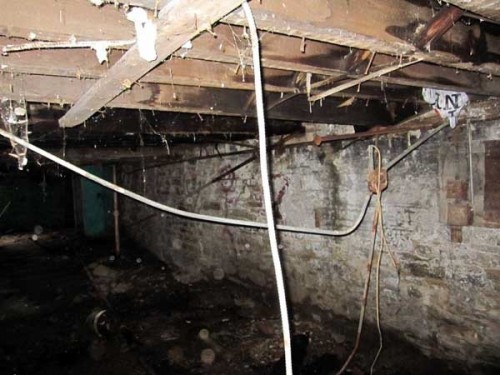
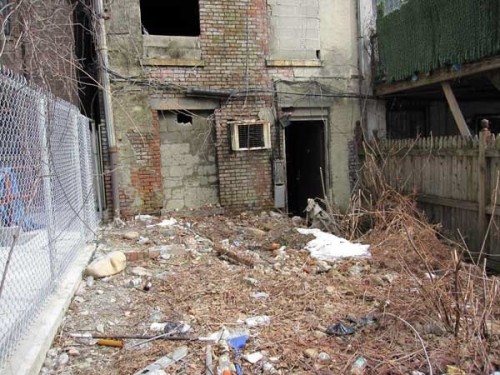

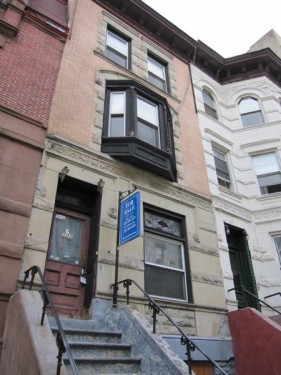 This townhouse is one that we kept coming back to. There were times when we thought we might not be able to afford to get a townhouse and when those times came up 505 West 144th Street was always one of the ones we’d bring up that we could afford. In many ways it was the financially safe option.
This townhouse is one that we kept coming back to. There were times when we thought we might not be able to afford to get a townhouse and when those times came up 505 West 144th Street was always one of the ones we’d bring up that we could afford. In many ways it was the financially safe option.